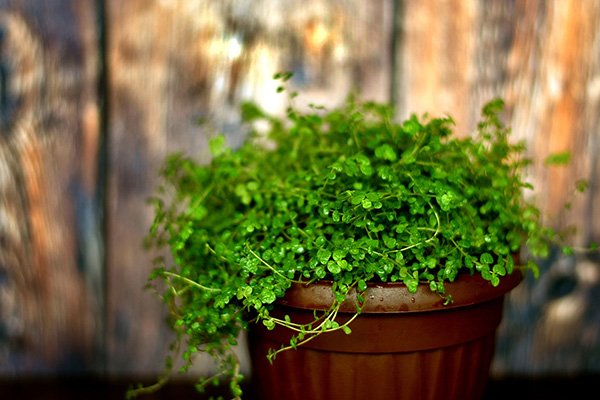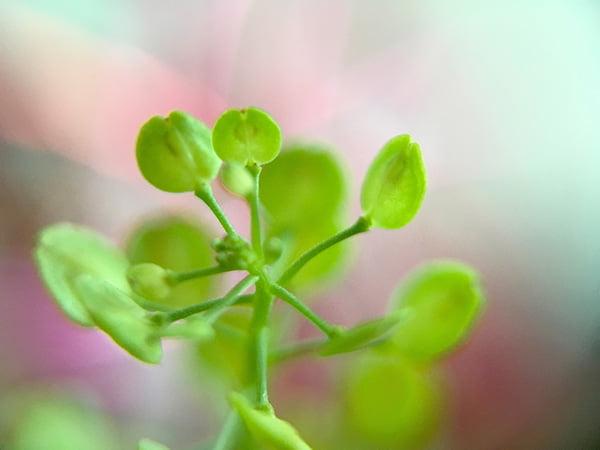If you are searching for a delicate yet easy-to-care-for plant to add to your indoor garden, look no further than the baby tears plant! These tiny, rich green leaves cascade over the sides of pots or terrariums, creating a stunning natural display. Known for their soft, velvety texture and delicate appearance, these plants are a favorite among plant lovers and collectors alike. Despite their delicate appearance, baby tears plants are surprisingly hardy and easy to care for, making them an excellent choice for beginners.
Whether you're looking to brighten up your home, office, or outdoor space, the quick-growing baby tears plant is a versatile and stunning addition to any collection. They are a perfect choice for hanging baskets, terrarium containers, mixed containers, and rock gardens. Below, we'll go through all you'll need to know to grow a lush green Baby's Tears plant, either cascading out of a hanging basket or spreading out as ground cover.
Botanical Name
Common Name
Plant Type
Mature Size
Sun Requirement
Soil Type
Hardiness Zone
Pet Friendly
Soleirolia soleirolii
Baby Tear Plant
Perennial
2 to 4 inches tall, up to 12 inches wide
Indirect sunlight or partial shade
Moist, well-draining soil
9 to 11 (USDA)
Yes
What Is A Baby Tears Plant?
Baby's Tears (Soleirolia soleirolii) is a quick-growing plant native to southern Europe. It is also called Irish Moss, Corsican Carpet Plant, and the Mind Your Own Business plant.
The small, round leaves are of a yellow-green to deep green color and generously cover their somewhat fleshy stems. Reaching only about 3 to 6 inches high, the stems branch out and grow into a dense mat of evergreen leaves. If cared for properly, you'll enjoy a burst of tiny white flowers periodically through the growing season.
The tiny leaves and dense growth habit of Baby Tears make it a popular choice for rock gardens, fairy gardens, and as a grass alternative. It's also a great terrarium plant!
In some areas of western Europe and California, this creeping plant has spread so prolifically that it is considered a common weed and is even labeled as an invasive plant! If you're growing your Baby's Tears plant outdoors, keep it in a confined space and monitor its spread.
Baby Tears Plant Care Requirements
Light
Baby Tears plants require an abundance of bright, indirect light. It's better to have too little light than to put your Baby Tears plant in direct sun. Intense, direct light will cause the small leaves to scorch. If you are growing Baby's Tears indoors, place the pot in a north or east-facing window, or use sheer curtains to diffuse direct sunlight. If you see brown leaves, this likely means that your Baby Tears plant is receiving too much light.
Water
The trickiest part of growing a Baby Tears houseplant is getting the soil moisture balance correct. The soil needs to be kept consistently moist but not soggy for your plant to thrive. Typically, this means watering your Baby's Tears plant once a week during the growing season. Always check the soil moisture with your finger prior to watering, and only use pots with a drainage hole. If you see yellowing lower leaves, this is a sign of overwatering.

Source: Pixabay
Temperature
The ideal temperature range for Baby's Tears plants is between 50 and 65 degrees Fahrenheit. Although these are somewhat chilly temperatures, this small plant has been proven to tolerate normal household temperatures pretty well. Try to keep its pot in a cool location in the house, and keep it out of warm kitchens and steamy bathrooms.
When grown outdoors, remember that Baby Tears plants have no tolerance for frost and will very quickly be damaged or killed by cold overnight temperatures. If you live in a USDA zone where the nights dip below 35 degrees Fahrenheit, you must grow your Baby's Tears plant in a pot that can be brought indoors.
Humidity
Baby's Tears plants grow best in an environment with 60% humidity. You will likely need to boost the humidity in your home, or at least in the air immediately around your plant. You can do this by misting the leaves with distilled water, running a small humidifier, or setting your plant's pot on a pebble tray.
Soil
It's important to use proper potting soil for your Baby's Tear plant so that you can achieve the moist-not-soggy soil that you need. It needs to drain well, hold on to moisture, and provide ample air circulation to prevent root rot. You can create your own well-drained soil by adding peat moss (for moisture retention) and perlite (for aeration) to a bag of commercial potting soil.
Fertilization
This fast-growing plant does best when you feed the potting mix every two weeks during the spring and early summer. Use a balanced, water-soluble fertilizer. Never apply fertilizer when the soil is completely dry, or you might burn the roots.
Pot/ Planter
Baby's Tears plants require a pot that has good drainage, is at least 2-3 inches deep, and is filled with well-draining potting soil. A small and shallow pot may not provide enough space for the plant's roots to grow and may dry out too quickly, so it's best to choose a pot that is proportional to the size of the plant. Baby's Tears can also be planted in a terrarium or enclosed container with high humidity levels to promote healthy growth.
Repotting
This is one of the fast-growing house plants, and you'll need to move it into a bigger pot size regularly! It likes to be slightly root bound, so only increase the pot by an inch in diameter. Carefully remove the plant from the old pot, loosen up the root ball, then replant it in a new pot. Fill the pot with a mixture of old and new potting mediums.
Propagation
Once your Baby's tears plant starts to overgrow or decline, it's time to repot and propagate. Baby's Tears plants are best propagated by division, and it's incredibly easy to do! Simply unpot your Baby's Tears, gently divide the root ball with your fingers, and repot in separate pots! Place a plastic bag over the top of the pot while the roots re-establish to create an environment with high humidity.

Source: Flickr
Common Problems With Baby's Tears Plant
Common Pests
Baby Tears plants are possible hosts for whiteflies, scale insects, and aphids. Treating each of these infestations is the same. Remove any insects or eggs you notice, then spray an insecticide or neem oil.
Common Diseases
Baby's Tears grow in consistently moist soil, and it's not uncommon for one round of overwatering to throw things off balance and invite various fungal diseases. These include botrytis, southern blight, powdery mildew, and root rot. To treat, prune away any damaged foliage or roots, repot your plant in fresh soil, and amend your watering schedule moving forward. You should also check that your plant is in a spot with good air circulation!
Is Baby's Tears Plant Pet Friendly?
Yes, the Baby Tears plant is non-toxic to both pets and humans.
FAQ
What Is Dwarf Baby's Tears Plant?
Dwarf baby's tears and baby's tears are two different plant species with some similarities in appearance but notable differences in care requirements. Dwarf baby's tears have tiny, round leaves that grow close together, forming a dense carpet-like cover over surfaces. It is a popular choice for aquascaping due to its aesthetic appeal and ability to absorb excess water nutrients, helping maintain a healthy aquatic environment.
Does Baby's Tears Plant Flowers?
When grown outdoors in desirable locations, Baby's Tears plants produce small, insignificant flowers in late spring or early summer.
